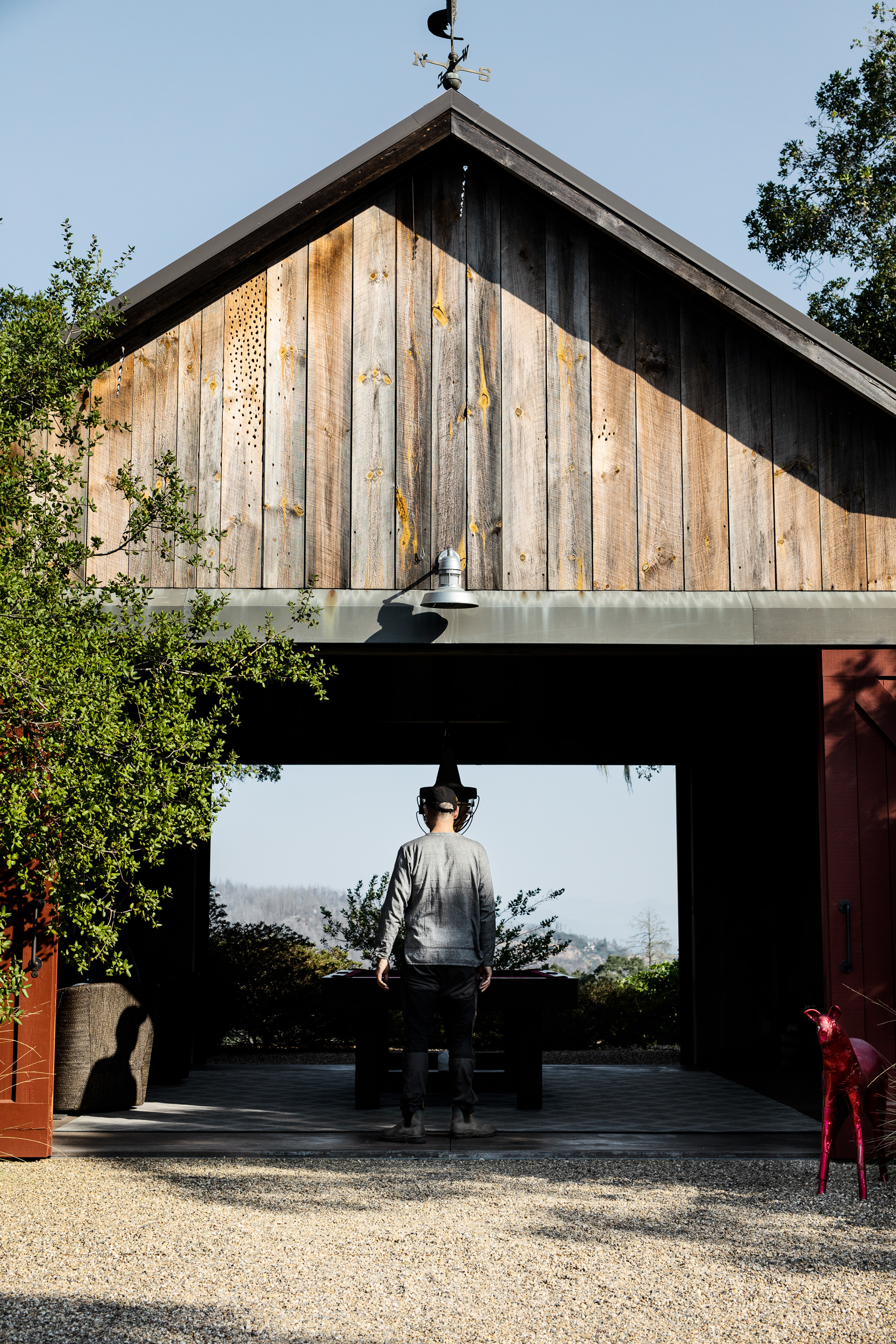09th Nov 2023
The tiny new Fe Vineyard (pronounced “fee”) is so named because of the abundance of iron in the soils, Fe being the symbol for iron on the periodic table. Located in the foothills of Spring Mountain, about halfway between St. Helena and Calistoga, the estate covers seventeen acres, but only five are planted. When Jon and Joanne Goldstein purchased the property in 2012, it was virgin vineyard land, but it did come with a permit for planting vines. All it needed was a keen viticultural eye and the right winemaker.

Match Made by Dionysus
“I met the Fe property before I met the Goldsteins,” says winemaker Aaron Pott. “I was asked by real estate agent Cyd Greer to come up and evaluate the property for a vineyard. It was a brief visit because the soil was absolutely ideal; mostly Aiken clay loam and a little Forward volcanic tuff.”
Not long after, Aaron was introduced to the potential buyers—Jon and Joanne Goldstein. There was an immediate connection.
“The Goldsteins realized that I had a passion for wine and loved their property,” recalls Aaron. “They wanted me to be part of the design and planting of Fe from the very beginning. This was a great idea because we were able to match clones, rootstocks, and varieties to the site. Both Jon and Joanne were friends of the owners of Seven Stones (another of Aaron’s clients) and had loved those wines, so it was a match made by Dionysus.”
Tasting wines from a new site is always fascinating. Fe immediately strikes me as not only outstanding quality but singular.
"Fe is a unique site."
Aaron agrees. “Fe is a unique site. It is in the Spring Mountain AVA but has a foot in the St. Helena bench that rises above the St. Helena Highway and shares the same soils as Colgin’s Tychson Hill and Grace Family Vineyard. The sun is blocked by Spring Mountain during the hottest parts of the afternoon. We have four acres of Cabernet Sauvignon with two clones, See and Weimer, and one acre planted to a third each of Malbec, Cabernet Franc, and Petit Verdot. The vineyard is surrounded on two sides by Bothe State Park, so it is a very easy site to keep strictly organic. We use a combination of compost teas throughout the vintage to help the vineyard along. There are insectaries, bluebird boxes, and owl boxes to promote biodiversity.”

"I like to plant vineyards in the hope that they will outlive me."
I asked Aaron to comment about some of the challenges of establishing this vineyard.
“I think often young vineyards are misunderstood,” he says. “The thing that makes old vineyards great is that they are naturally balanced and produce great wines through that natural balance. In order to get a young vineyard to produce great wines early on, we must try to balance it like an old vineyard. This can be achieved with a lot of work and effort in the vineyard, but it is worth it. I like to plant vineyards in the hope that they will outlive me and that they will become sustainable over time, that eventually, they will no longer need water or extra compost, and that they will produce a great crop naturally and live for longer than a hundred years. If we look at young vines historically, we must think of the 1961 Bordeaux wines. The wines were sensational and mostly from young vines as so much of the vineyards were devastated by the 1957 killer frosts. In 1961, there was a severe spring frost that really limited yields and created great concentrations on young vines.”
Fe Vineyard produced its first tiny crop in 2015, and the first commercial release was 2016. The vineyard makes two wines: a Cabernet Sauvignon and “26” (the atomic number for iron), with more Malbec, Petit Verdot, and Cabernet Franc in the blend. The vineyard is certified organic. Production is small at less than 600 cases across the two labels. The wines are sold direct-to-consumer via the Fe Wines website and mailing list.

PRODUCERS IN THIS ARTICLE
> Show all wines sorted by scoreMore articles

Cathiard Vineyard New Releases
02nd May 2024
3 tasting notes

Bordeaux 2023 Preliminary Vintage Report and Reviews from Barrel
29th Apr 2024
56 tasting notes

2021 Bordeaux in Bottle and A Modest Proposal
24th Apr 2024
599 tasting notes

Pilcrow’s New Releases
18th Apr 2024
7 tasting notes
Show all articles